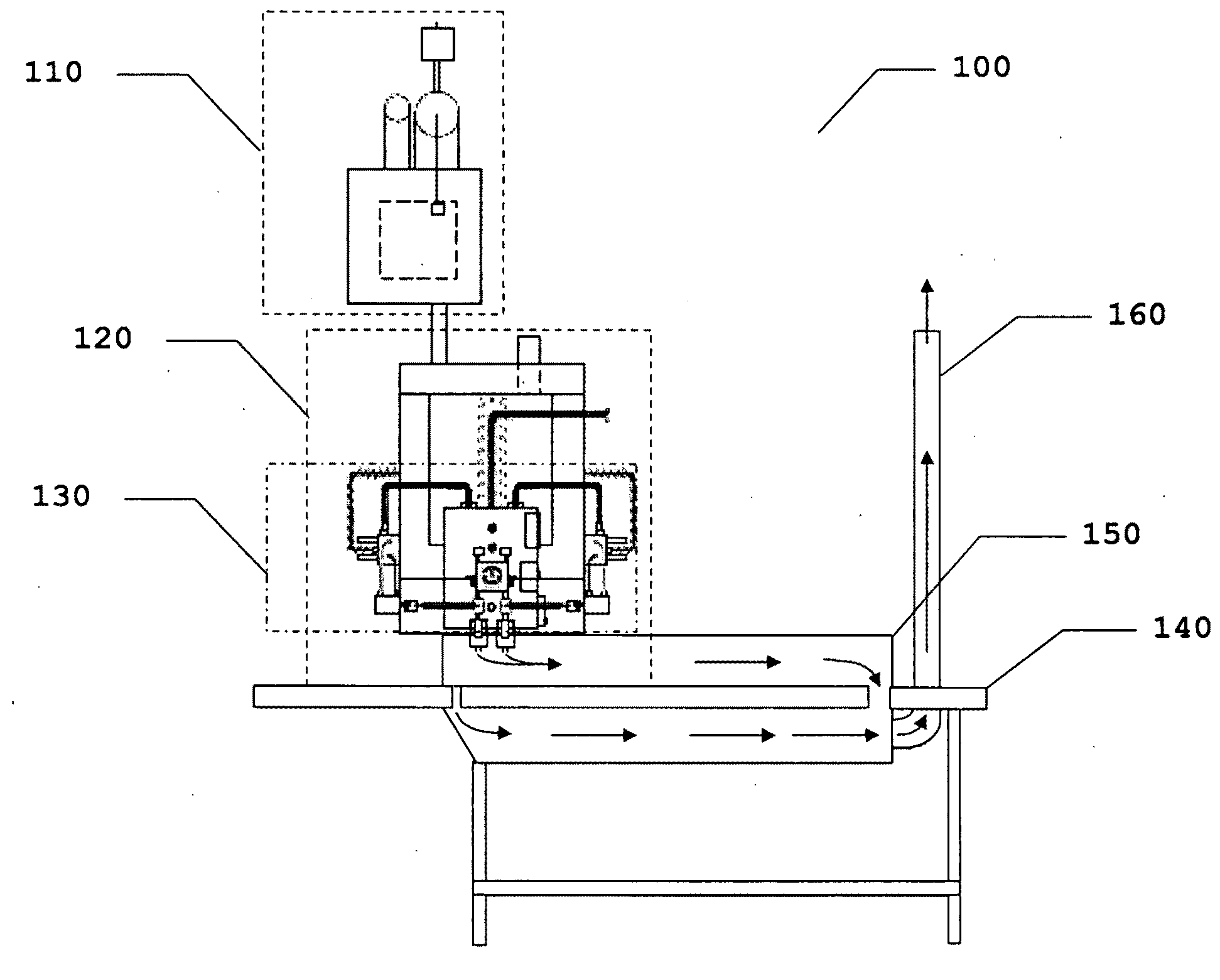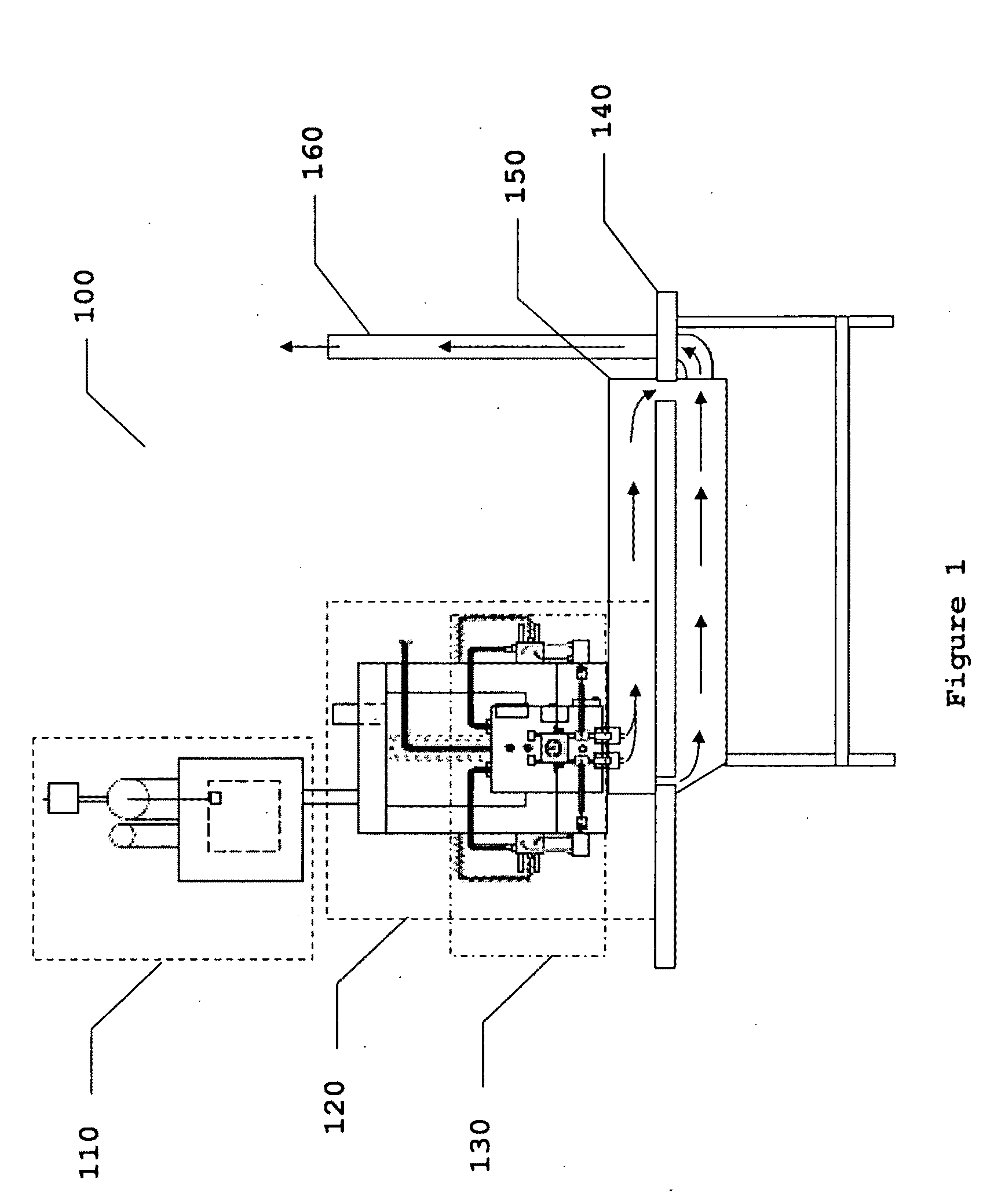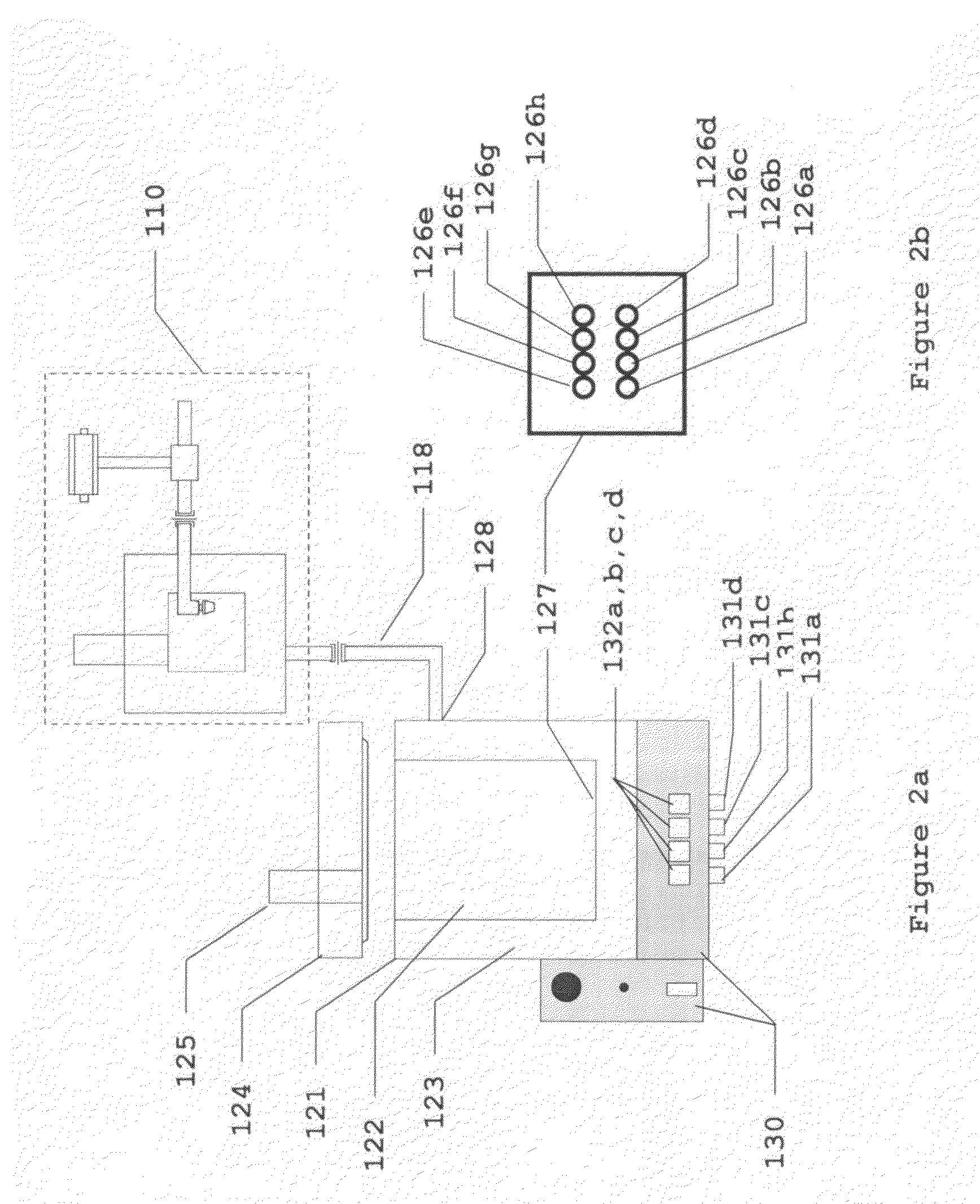Ultrafast food freezing equipment by direct contact with dosed liquid nitrogen
a technology of liquid nitrogen and food freezing equipment, which is applied in the field of ultrafast food freezing equipment operating with liquid nitrogen, can solve the problems of not being able to store food for a long time, affecting the preservation of food, so as to facilitate crystallization, facilitate the phenomenon, and increase the freezing point. the effect of the freezing poin
- Summary
- Abstract
- Description
- Claims
- Application Information
AI Technical Summary
Benefits of technology
Problems solved by technology
Method used
Image
Examples
Embodiment Construction
[0067]The description below will be referred to the Figures referred above, that must be understood as illustrative of the preferred embodiment of the invention and not as limitative of the inventive concept. Common elements in Figures show the same numbers in all of them.
[0068]This invention is referred to an equipment for freezing of articles, preferably food, either raw or cooked, in groups of individual portions arranged and confined into a pack for public sale.
[0069]FIGS. 1 and 2 schematically illustrate an embodiment of the equipment of the invention, referred as a whole by number (100), comprising a phase separator (110), a dispensing zone for liquid nitrogen (120), control means for dispensing (130), a band (140) for conveying the material to be frozen towards and from the equipment, a tunnel type cold chamber (150), and an exit for nitrogen gas to the atmosphere (160).
[0070]In FIG. 2 it is shown in detail, in a schematic illustration, the dispensing zone (120) for liquid ni...
PUM
 Login to View More
Login to View More Abstract
Description
Claims
Application Information
 Login to View More
Login to View More - R&D
- Intellectual Property
- Life Sciences
- Materials
- Tech Scout
- Unparalleled Data Quality
- Higher Quality Content
- 60% Fewer Hallucinations
Browse by: Latest US Patents, China's latest patents, Technical Efficacy Thesaurus, Application Domain, Technology Topic, Popular Technical Reports.
© 2025 PatSnap. All rights reserved.Legal|Privacy policy|Modern Slavery Act Transparency Statement|Sitemap|About US| Contact US: help@patsnap.com



